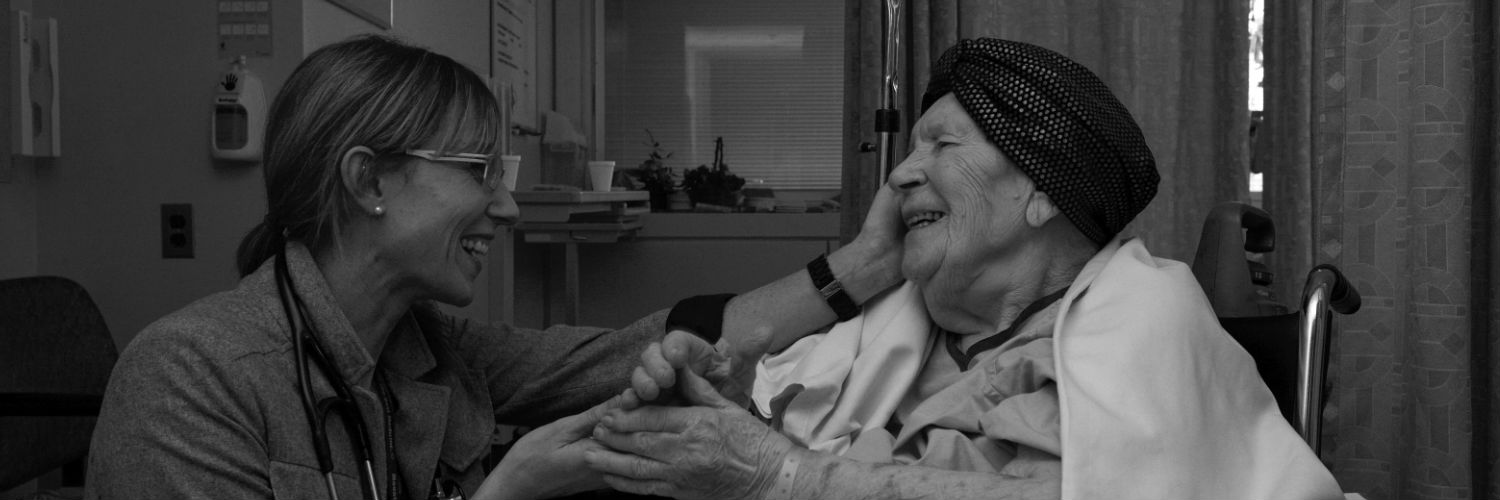If you imagine that the body is a machine, and illness represents its breakdown, then hospitalization can be considered a significant attempt to repair it when something serious happens. When providing care for older patients, this disease-centred thinking, however, is too narrow and will therefore produce limited results. When older adults are hospitalized, it can unfortunately set them on a greater path of declining health and reduced functional abilities often caused inadvertently by what many in health care refer to as the ‘Hazards of Hospitalization’.
The challenges facing hospitalized older adults start almost as soon as they are admitted. When older adults are hospitalized, they will often stay in bed for a significant proportion of their stay, which can actually hasten the decline of their overall functional abilities. For example, 30 to 60 per cent of acutely hospitalized older patients will experience a functional decline as a result of their stay, and a year after discharge from hospital, less than one in two older adults will have regained their pre-illness level of function. All of this contributes to a depressed mood, the chance of developing an onset of delirium and permanent physical impairment, resulting in a once-functional older person becoming a more dysfunctional older person. It also contributes to increased rates of admissions to long-term care homes and even higher rates of mortality.
Despite these challenges for both older adults and our hospitals, it’s amazing to still see how the vast majority of our hospitals have still not prioritized the care of older adults, despite older Canadians representing over 40 per cent of hospitalizations and 60 per cent of hospital days in Canada.
Nevertheless, to mitigate these challenging issues that older adults face in our hospitals, health care leaders are increasingly recognizing that hospitals need to have appropriate settings where health care providers can deliver customized care to older adults and achieve better patient outcomes.
In 2010, when Mount Sinai Hospital became the first major acute academic health sciences centre in Canada to make geriatrics a key strategic priority. Soon after, Ontario’s Local Health Integration Networks (LHINs), with the support of the Regional Geriatric Programs (RGPs) of Ontario launched a provincial Senior Friendly Hospital (SFH) Strategy to encourage Ontario’s hospitals to better meet the needs of its older patients. An elder-friendly hospital that the strategy envisioned should be organized to be physically, organizationally, medically and culturally elder-friendly with processes and models of care that take the needs, abilities and autonomy of older patients into consideration with the goal of maintaining their functional abilities. Now, at least 42 of Ontario’s 144 hospitals are collecting data on the progress they have made towards becoming more age-friendly.
For our part, in 2011, we opened one of Canada’s first Acute Care for Elders (ACE) Units which still remains a fairly rare model of inpatient care in Canadian hospitals. Our specialized 28-bed inpatient acute medical unit includes highly trained and expert nursing staff among other health professionals to meet the unique needs of our older patients and their families identified at admission as being at highest risk of losing their independence. All patients who are admitted to our Ben and Hilda Katz ACE Unit receive care that promotes the maintenance of their functional abilities.
But, what if older patients could receive hospital-level care without being hospitalized?
We’re joining other health systems around the world that are starting to shift settings of care away from the hospital by offering acute medical care at home and in the community when it is appropriate for older patients, through a model called Hospital at Home. The premise of the model is that since hospital care is costly and not all patients require the full range of complex services available, health systems can reduce costs and make more hospital beds available to others by providing appropriate but the less intensive forms of acute medical care in older patients’ homes when possible, which is also what many would prefer. We are proud that the Ministry of Health and Long-Term Care has authorized Sinai Health System and the University Health Network to launch this first example of Hospital at Home in Canada.
With the ageing of our population, older patients will drive an increase in the need for emergency department and acute hospital care. Many providers and patients are looking to advancing in technology that can enable enhanced home and community care models as a vehicle through which to prevent going to the hospital unnecessarily, but the need amongst older adults for acute care services is unlikely to go away any time soon. The Hospital-at-Home model allows older patients to opt to receive appropriate forms of lower-intensity hospital-level care from nurses, doctors and other health care providers in their own homes, and avoid the potentially negative outcomes of a hospital stay that can be associated with higher risk hospital environments like hospital acquired infections. What is more compelling is that Hospital at Home Models have consistently shown their ability to allow patients to heal more quickly, with fewer complications, with a much lower chance of dying and a much higher level of satisfaction.
Around the world, it’s proven fantastically popular. The Hospital at Home model has been successful in European countries, such as the United Kingdom and France. In Baltimore, 69% of acute care older patients who were eligible for Hospital at Home opted to receive it, and in the State of Victoria in Australia, 25,000 patients benefit from their Hospital at Home Services every year which they predict has allowed them to have to build a 500 bed hospital. It’s time older Canadians gained access to this well-established model of care as well, so we can move our health systems from delivering care in disease-focused and -centred hospitals to more patient-centred models of care in or close to people’s homes.
Date modified: 2018-04-03

